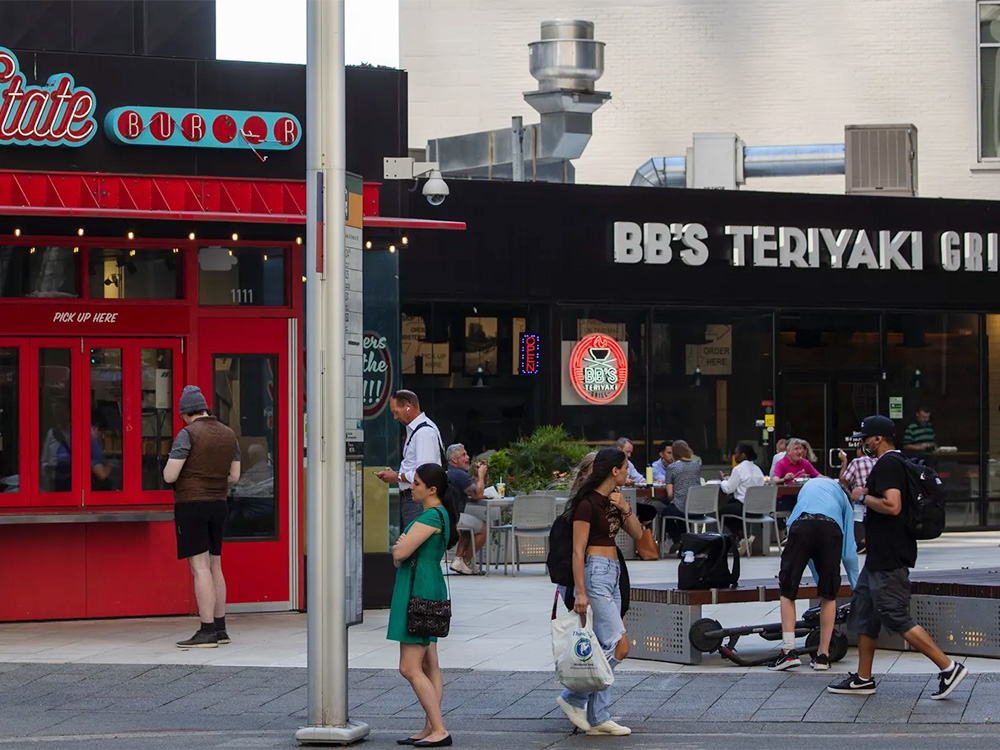News
The Seattle Times: There’s hope in Seattle’s downtown recovery — depending on the data you use
Posted on

This article was originally published by The Seattle Times on Aug. 27, 2022
By Gene Balk / FYI Guy
Seattle Times columnist
There’s more than one way to gauge downtown Seattle’s recovery from the pandemic.
Earlier this week, I looked at a study that analyzed smartphone data and found visits to downtown were at just 52% of their 2019 levels.
But there are other metrics that can be used to measure downtown’s recovery. The Downtown Seattle Association tracks a variety of them, and they’ve recently shared a lot of this data on their website, downtownseattle.org.
If you have the perception that it’s all bad news, these charts will surprise you.
For example, the number of visitors to downtown Seattle in both June and July was at more than 90% of 2019 levels. In July, nearly 3 million people visited downtown, which is down only about 300,000 from the same period in 2019. This number does not include people who live or work downtown, according to the DSA. And before you question the veracity of this data because the DSA’s mission is to advocate for downtown, know that the DSA is not the source — the agency is just sharing it. The data comes from Placer.ai, a national firm that provides foot-traffic analytics.
Another bright spot for downtown is hotel occupancy. It surged this summer, reaching 94% of its 2019 levels in July, according to a chart on the DSA website that uses figures from hospitality-data provider STR, provided by Visit Seattle.
“I think it’s been remarkable progress,” said Jon Scholes, president and CEO of the DSA. “We’ve had the No. 1 or No. 2 hotel occupancy in the country for most of the summer, and total foot traffic is inching up there close to what it was in 2019.”
There’s something significant to keep in mind about these numbers, though. The DSA uses the broadest geographic definition of downtown, which includes all downtown neighborhoods from the stadiums to Seattle Center, and extends east of Interstate 5 to include First Hill and Capitol Hill (up to Broadway).
But I think when most Seattleites talk about downtown, they’re really thinking about the Central Business District — or at most, the neighborhoods west of I-5. And this does make a difference, because the recovery from the pandemic isn’t uniform across all these neighborhoods.
For example, the Capitol Hill nightlife and restaurant scene appears to be back in full force — this seems true in Belltown, too. Or if you’ve visited Pike Place Market, Seattle Center or walked along the waterfront this summer, you probably felt things were back to normal.
But if you visit the heart of downtown — the city’s retail and employment core — you’re reminded how hard the pandemic hit this city, and that we still have a long way to go.
Even so, Scholes says the data shared by the DSA is primarily capturing what’s happening in the center of downtown because that’s where the greatest amount of change has happened in recent months. He also said metrics like office workers and hotel visitors largely capture activity in the city’s core, where he feels the recent improvements are significant.
“There’s no doubt we still face a lot of challenges [but] I think we’ve seen some progress,” he said.
He noted reports of violent and property crime dropped nearly 20% from winter to spring this year. But many people’s perception of downtown as a dangerous or lawless place remains a problem, Scholes said. And employers need to feel downtown is safe before they bring their workers back to the office, he added.
Another chart on the DSA’s website shows that as of July, worker foot traffic downtown is at just 39% of 2019 levels, according to data from Placer.ai.
“The office workers are still largely missing; they were a big a contributor to the energy on the streets,” Scholes said. “The conditions on the street are the number one factor in the minds of employers in bringing people back downtown.”
The June and July worker-foot-traffic numbers may seem low, but they still represent a significant improvement from earlier months. And Scholes believes the number of workers downtown will continue to grow.
But he also pointed out downtown’s strength is the area that is not wholly dependent on office workers, or on any single industry or sector. People come downtown for a wide variety of experiences, such as sporting events, arts and entertainment, conventions and shopping. The cruise ships are back, too.
And the streets of downtown are increasingly filled by residents in addition to visitors. As of July, there were 56,000 occupied housing units downtown, above the pre-pandemic high of 52,000, according to commercial real estate data provider CoStar.
Gene Balk / FYI Guy: gbalk@seattletimes.com; on Twitter: @genebalk.